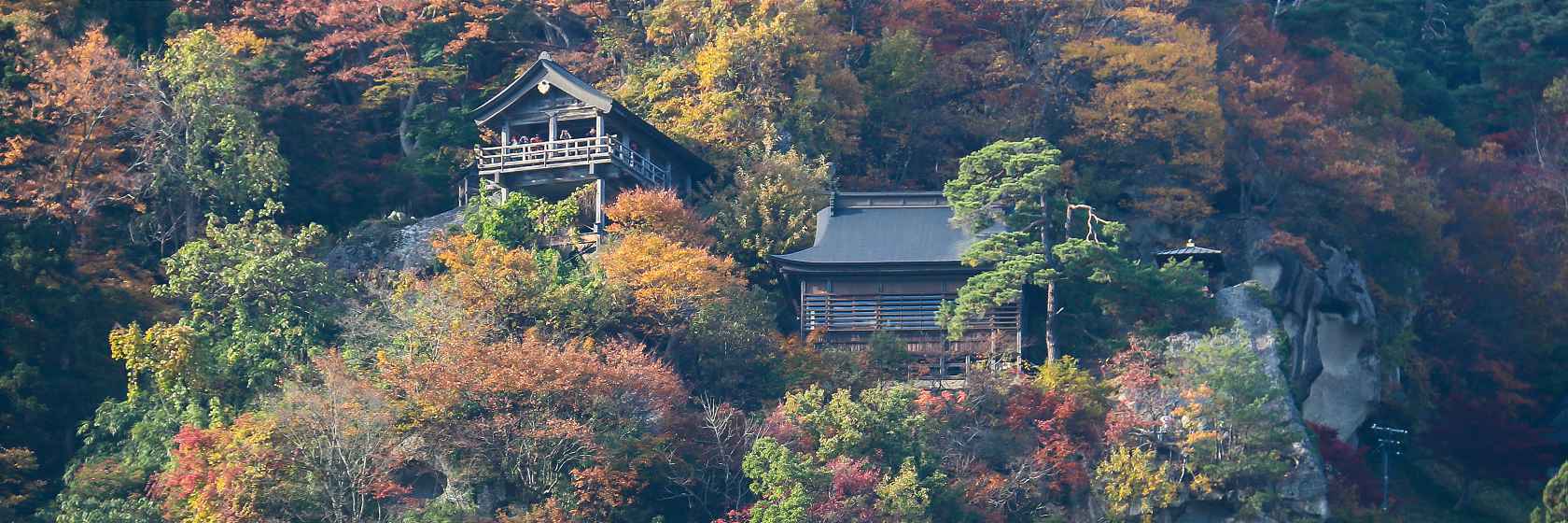Yamadera (ÄRÄø) is a scenic temple located in the mountains northeast of Yamagata City. The temple grounds extend high up a steep mountainside, from where there are great views down onto the valley. The temple was founded over a thousand years ago in 860 as a temple of the Tendai sect under the official name Risshakuji. Its popular name, Yamadera, literally means "mountain temple" in Japanese.
The base of the mountain is located about a five minute walk from the Yamadera train station, and there are several shops and restaurants, which cater to the temple's visitors. There is also a small visitor center just across the bridge along the way from the station to the temple.
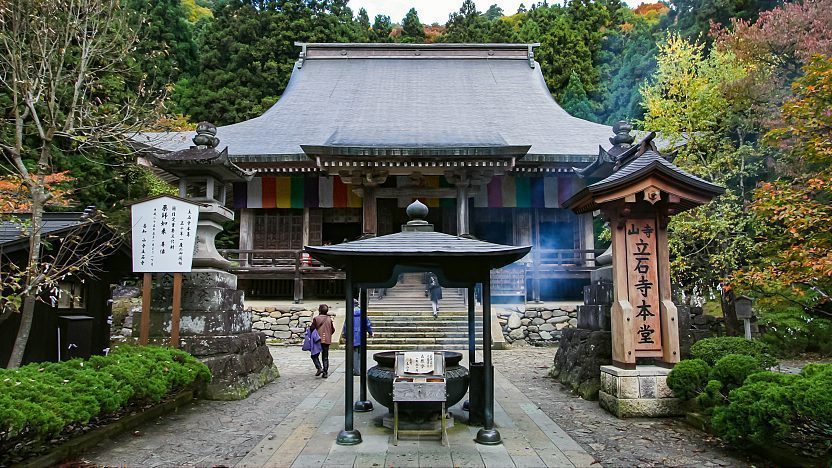
During the early Heian Period (794-1185), the Emperor Seiwa sent one of the country's most important Buddhist priests to the country's frontier region in the Tohoku Region. That priest, Jikaku Daishi, founded Yamadera in present day Yamagata Prefecture, which at the time was part of the Dewa Province at the very northern extreme of the national borders.
Yamadera is also known for a visit by the famous poet Basho, who composed one of his most enduring haiku there. During Basho's journey into northern Japan in the late 1600s he stopped at Yamadera and composed a short poem about the stillness and silence of the area. Nowadays, a statue of Basho and a rock inscription of his famous poem can be found in the lower area of the temple grounds.
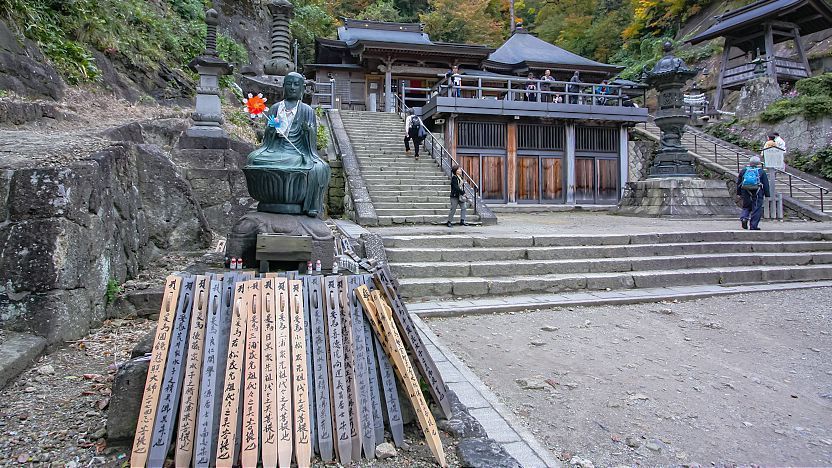
Located around the base of the mountain are several temple buildings, including Konponchudo Hall, Yamadera's main hall. The beech wood building is the temple's oldest and stores Buddhist statues and a flame that is said to have been burning since Yamadera's foundation. The flame had been brought from Enryakuji Temple in Kyoto, the head temple of the Tendai sect, to which Yamadera belongs. Also around the mountain's base stands a small treasure house that requires an entrance fee.
To reach the upper area of the temple grounds, visitors must hike up a trail that leads up the mountainside. The ascent takes about 30 minutes and begins after the Sanmon Gate, located a couple minutes' walk from the main hall, where a small entry fee must be paid.
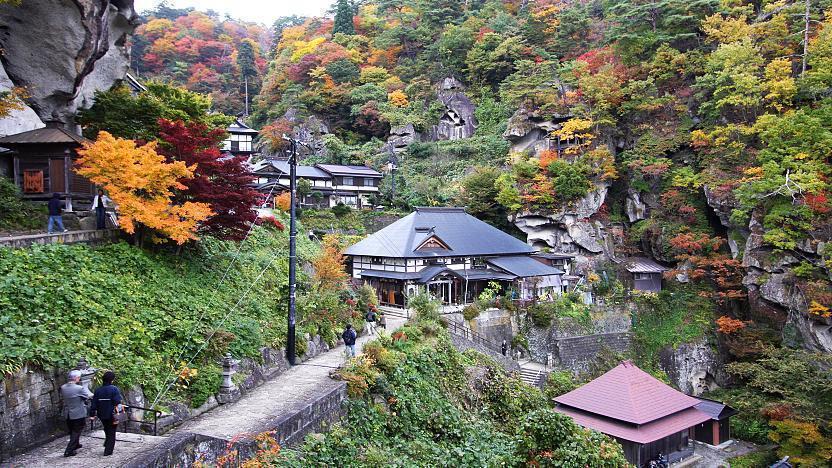
The stone path up the mountain has about 1000 steps, which might make the approach difficult for some visitors. There are stone lanterns and small statues in the surrounding forest along the way that make for an atmospheric hike. Near the top, the route passes by the massive Mida Hora rock, which is shaped like Amida Buddha. Shortly after, visitors will reach the Niomon Gate, built in the 19th century and one of the temple's newer buildings, from where the upper temple area begins.
Past the Niomon Gate there are many temple buildings at various points along the mountainside. The area is open and affords wonderful views out into the valley, in contrast to the lack of views along the ascent through the forest. One of Yamadera's most famous buildings, the Kaisando Hall and the smaller, adjacent Nokyodo building are located up and to the left of the gate. The Kaisando Hall is dedicated to the temple's founder, Jikaku Daishi, while the Nokyodo was used for copying sutra.
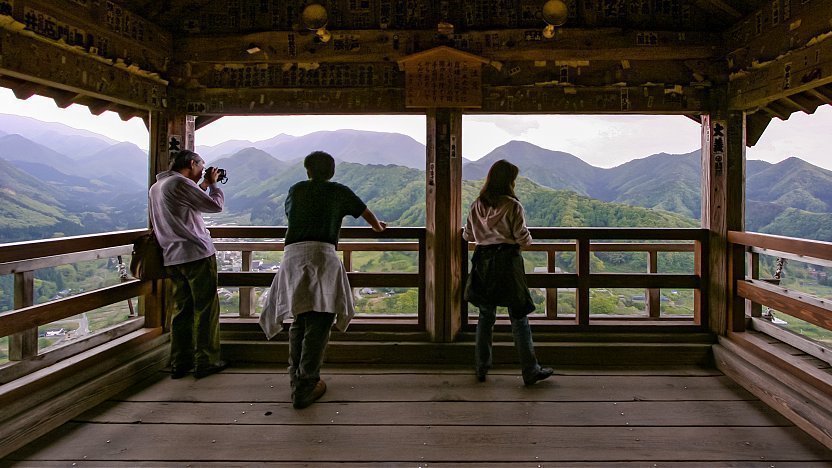
Past the Kaisando Hall there are more stairs that lead up to the Godaido Hall, an observation deck with the best views onto the valley below. The building dates back to the early 1700s and extends out over the cliff. Hiking beyond the Godaido Hall is not possible, but there is a path that leads from the Niomon Gate further into the mountain to the Okunoin area. Within the Daibutsuden Hall there is a large statue of Amida Buddha that can be observed from outside.
South of Yamadera and the train station there stands a museum dedicated to Basho that focuses on his trip to northern Japan.
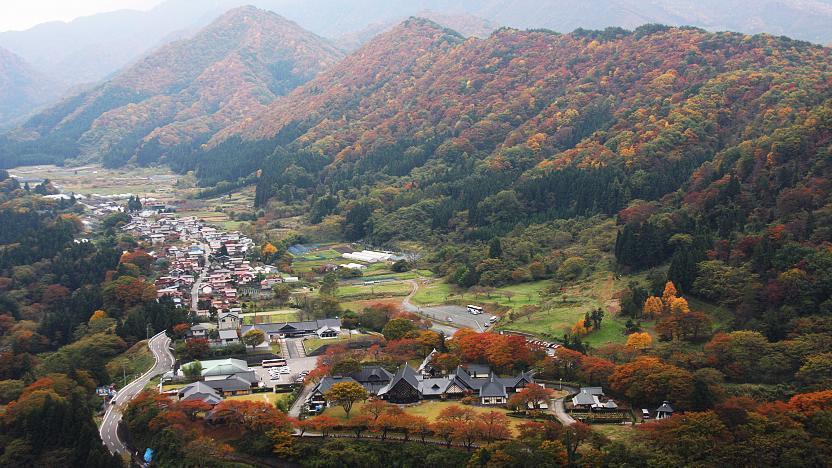
Getting there and around
Yamadera Temple is about a five minute walk north of Yamadera Station, and the Fuga no Kuni entertainment complex is about a five minute walk southeast of the station.
Yamadera Station is served by the JR Senzan Line, which connects Yamagata City and Sendai. The station can be easily reached directly from either Yamagata Station (about 20 minutes, 240 yen, one train per hour) or Sendai Station (about one hour, 860 yen, one train per hour). If traveling to Yamadera from Tokyo, it is usually faster to travel via Sendai (how to get to Sendai).
Hours and Fees
Yamadera Temple
Hours
8:30 to 15:00 (December to March)
Closed
Admission
Yamadera Basho Memorial Museum
Hours
Closed
Admission
Questions? Ask in our forum.
